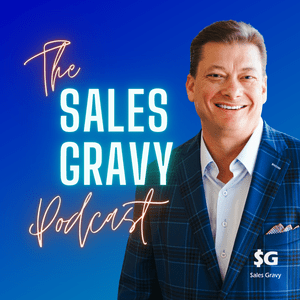How to Handle Decision Deferment Objections (Money Monday)
There is a big challenge in today’s marketplace that’s popping up left and right for sales professionals—Decision Deferment Objections.
If you’re running into stakeholders who say, “Let’s just hold off a bit,” “We need more time,” or “We want to wait until the market settles,” then we're going to dive into why this is happening and, more importantly, how you can handle these sales objections with confidence and skill.
Turbulent Times Breed Buyer Fear
The market is swinging like a pendulum on steroids, and it’s making everyone skittish. You’ve got tariffs, trade wars, and a spike in economic uncertainty.
Buyers read The Wall Street Journal or check their news feeds, and the headlines scream “Turmoil!” They panic. So they defer decisions, walk away from deals, or play the “wait and see” game.
Decision deferment objections are a natural consequence of fear. People want to avoid making the wrong move. It’s easier to hit the pause button than to commit to something they’re not 100% sure about. That fear, in many ways, is irrational. But it’s a brick wall that will shut down your deal if you let it.
So how do you avoid letting hesitation, stalling, and decision deferment kill your deals during market uncertainty?
It starts with a fundamental truth: to succeed in this environment, you must sell better. Because when people are fearful, indecisive, or uncertain, how you sell matters far more than what you sell.
Why Buyers Pull Back and Defer Decisions
In uncertain and volatile times, mistakes come with severe penalties. A stakeholder who chooses the wrong vendor, invests in the wrong technology, or commits resources too soon might put their entire business or career at risk.
So they freeze. They put it off. They say, “We’ll need a little more time to think about it,” or “We need to run the numbers again,” or “Let me talk to my boss.”
If you haven’t uncovered real fears, addressed them, and methodically advanced the deal, you’ll hit a wall of deferment decision objections at maximum force. That’s why I often sound like a broken record—but repetition is the mother of skill. The basic steps to closing in an uncertain market are fundamental:
Execute your sales process flawlessly
Consistently ask for micro-commitments to advance the sale
Present a compelling, airtight case for change
Ask your stakeholders to make a decision confidently and without hesitation
Handle objections with empathy
Closing Is Not a Single Moment in Time
A lot of sales reps treat the close as one magic moment—like flicking a switch. But in reality, closing is a series of micro-commitments that happen throughout the sales process. Every time you get a commitment to a next step, your buyer to leans in just a bit more, and you set the stage for a final “yes.”
When times are normal, a halfway-decent rep can skip a few steps and still get deals across the finish line. But in a crisis or uncertain market, that sloppy approach falls apart.
You must consistently get micro-commitments and keep advancing—because if you let the ball drop even once, you’ll give your stakeholders an opening to stall or back out with objections like “We going to hold off,” or “We’re just going to stick with what we have until the economy gets better.”
Tough Objections? Check Your Upstream Sales Process
For this reason, if you are getting hammered at the close with brutal objections, it usually means you made mistakes earlier in the process.
So instead of obsessing over how to wordsmith your objection rebuttals, you might need to re-examine how you qualified and sold from the get-go. Tough objections at the 11th hour are typically a symptom of an earlier problem.
So, what do you do?
Qualify better upfront—Are these the right prospects? Are you sure they have a budget, authority, need, and timeline? Is there a compelling reason for them to change?
Ensure you’re dealing with real decision makers—If you’re stuck with “influencers” ...
